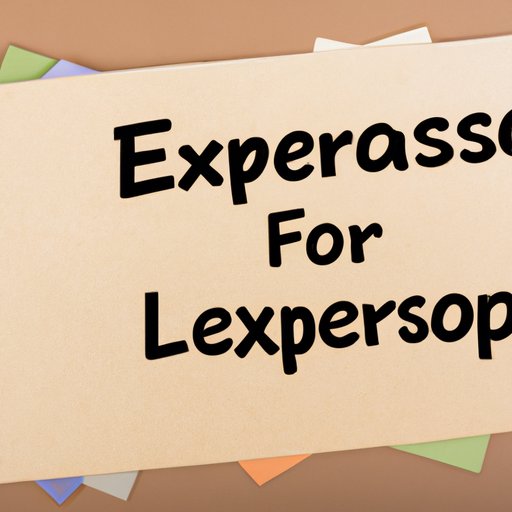
Introduction
Expanded learning time is a growing trend in the field of education, where schools and districts add extra instructional time to their day, week, or year. This strategy offers many benefits, such as improved academic outcomes, more opportunities for enrichment activities, and skill-building. However, it also requires additional funding, resources, and planning. This article will explore the cost implications of expanded learning time, how schools and districts have tackled funding and resource issues, and whether this strategy is worth the investment.
Benefits of Expanded Learning Time and Cost Implications
The benefits of expanded learning time are numerous. For example, schools that offer extra instructional time have seen improved academic outcomes in students, higher graduation rates, and an increase in college readiness. Students who face social or economic disadvantages may benefit the most from the additional time as it offers a chance to close the achievement gap and participate in activities that they may not have access to otherwise. However, the cost implications of implementing the initiative are significant and can be a barrier for schools. The additional time requires teacher salaries, materials, resources, transportation, and facilities use, all of which increase the school’s operating costs.
Approaches to Covering the Cost
Many schools and districts have implemented the initiative but struggled to fund and sustain it. Approaches to covering the cost have included grants from foundations and corporations, partnerships with external organizations, and fundraising activities. The key to successfully funding the program is to have a plan that is multifaceted and targets several potential funding sources. For example, the Massachusetts Expanded Learning Time Initiative used a three-pronged approach that combined state funding, philanthropy, and local support to offer additional time to schools.
Cost-Benefit Analysis of Expanded Learning Time
Several studies have looked at the cost-benefit analysis of expanded learning time, and the results are varied. Some studies have shown that upfront costs for implementing the initiative may be high, but the expected long-term gains, such as higher graduation rates and an increase in college and career readiness, may offset those expenses. For example, a study from the National Center on Time and Learning found that for every $1 invested in expanded learning time, the return on investment was $1.60.
Is Expanding Learning Time Worth the Cost?
The debate over whether expanding learning time is worth the investment is complex. While there is evidence that the initiative has positive outcomes, not all schools or districts have the necessary resources or funding to implement it. Therefore, a decision to expand learning time should consider factors such as expected outcomes, available budget, and potential funding and resources sources. Schools should also consider other areas where the same funding could be allocated or saved. However, if a school can afford to pursue expanding learning time, it can be a valuable investment that yields long-term academic rewards for students.
Q&A Style Article
Q: How much does implementing expanded learning time cost on average?
A: The cost varies depending on the school or district, the number of hours added to the day, week, or year, and the resources and materials required to support the program. However, a general rule of thumb is that schools should budget an additional 8% to 12% of their operating costs to fund the initiative.
Q: How do schools and districts fund expanded learning time?
A: They fund the initiative through a combination of state and federal grants, philanthropy, and local support. It is important to have a multifaceted funding plan that targets several potential funding sources to ensure long-term sustainability of the program.
Q: How do you measure the effectiveness of expanded learning time?
A: Schools should track academic outcomes such as graduation rates, attendance, and standardized test scores to measure the effectiveness of the initiative. It is essential to focus on outcomes that matter for students and schools, such as workforce readiness and college eligibility.
Case Study of A School That Has Implemented Expanded Learning Time
The KIPP Academy in Houston, Texas, is an excellent example of a school that has successfully implemented expanded learning time. The school uses a 9-hour school day, six-day week, and three-week breaks strategically to provide ample time to master academic material, participate in enrichment activities, and engage in extended learning opportunities. The program’s success is driven by a mentoring model that provides students with the support they need to succeed both academically and personally.
Opinion Piece for or Against Expanded Learning Time
Our opinion piece argues for the expanded learning time in schools and districts. The additional instructional time offers students a chance to close the achievement gap, participate in enrichment activities and develop essential knowledge, skills, and abilities contributing to their academic, personal, and professional success. While the upfront costs of implementing the initiative may be a challenge for schools, a cost-benefit analysis demonstrates that the long-term gains in academic outcomes may well outweigh the investment.
Conclusion
In conclusion, expanded learning time can be a valuable strategy for schools that want to improve academic outcomes and provide students with access to a well-rounded education. However, it also requires significant funding, resources, planning, and determination. Schools and districts that decide to go this route must have a multifaceted funding plan that targets several potential funding sources to ensure long-term sustainability of the program. However, if implemented successfully, expanded learning time can have a significant impact on closing the achievement gap and positioning students for long-term academic and personal success.




